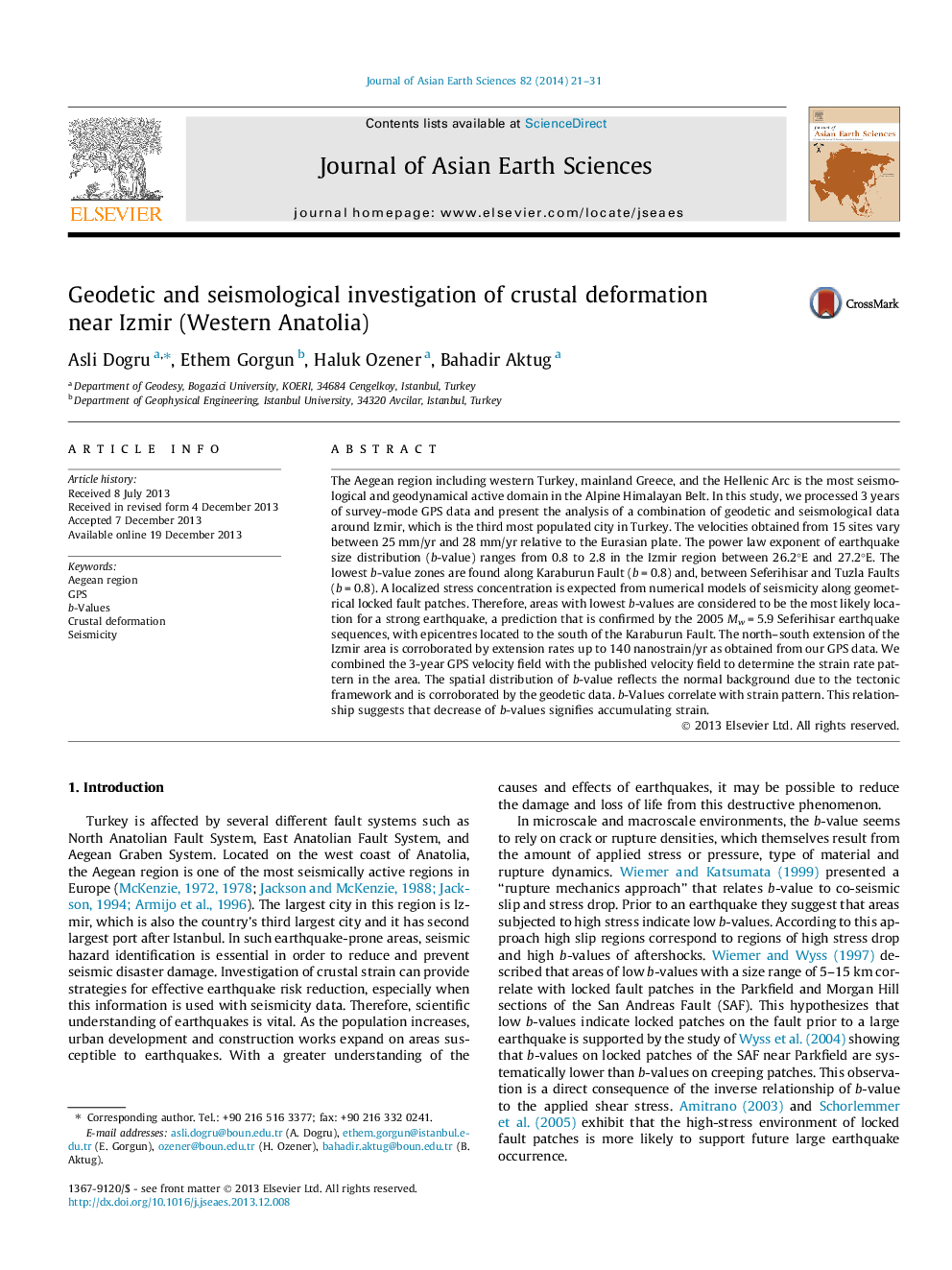| کد مقاله | کد نشریه | سال انتشار | مقاله انگلیسی | نسخه تمام متن |
|---|---|---|---|---|
| 4730800 | 1640386 | 2014 | 11 صفحه PDF | دانلود رایگان |

• We studied the faults around Izmir of Aegean region by geodetic and seismic data.
• To increase spatial resolution of velocity field, 3-years GPS data and published velocities combined.
• The strain field derived from GPS observations is consistent with b-value data.
• The areas with low b-values have the capacity of stress accumulation.
The Aegean region including western Turkey, mainland Greece, and the Hellenic Arc is the most seismological and geodynamical active domain in the Alpine Himalayan Belt. In this study, we processed 3 years of survey-mode GPS data and present the analysis of a combination of geodetic and seismological data around Izmir, which is the third most populated city in Turkey. The velocities obtained from 15 sites vary between 25 mm/yr and 28 mm/yr relative to the Eurasian plate. The power law exponent of earthquake size distribution (b-value) ranges from 0.8 to 2.8 in the Izmir region between 26.2°E and 27.2°E. The lowest b-value zones are found along Karaburun Fault (b = 0.8) and, between Seferihisar and Tuzla Faults (b = 0.8). A localized stress concentration is expected from numerical models of seismicity along geometrical locked fault patches. Therefore, areas with lowest b-values are considered to be the most likely location for a strong earthquake, a prediction that is confirmed by the 2005 Mw = 5.9 Seferihisar earthquake sequences, with epicentres located to the south of the Karaburun Fault. The north–south extension of the Izmir area is corroborated by extension rates up to 140 nanostrain/yr as obtained from our GPS data. We combined the 3-year GPS velocity field with the published velocity field to determine the strain rate pattern in the area. The spatial distribution of b-value reflects the normal background due to the tectonic framework and is corroborated by the geodetic data. b-Values correlate with strain pattern. This relationship suggests that decrease of b-values signifies accumulating strain.
Journal: Journal of Asian Earth Sciences - Volume 82, 15 March 2014, Pages 21–31